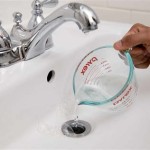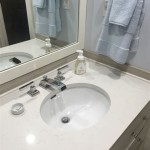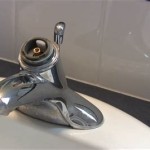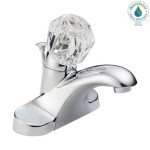How to Change a Valve Bathroom Sink Stopper
A bathroom sink stopper is a crucial component that allows you to control the flow of water in the sink. When the stopper is closed, it prevents water from draining, allowing you to fill the sink for washing or other tasks. Over time, these stoppers can become worn, damaged, or simply don't work as efficiently as they used to. When this happens, it's time to replace the stopper. Replacing a valve bathroom sink stopper is a relatively straightforward DIY project that can be completed with basic tools and a little bit of time.
This article will guide you through the process of changing a valve bathroom sink stopper, providing clear instructions and tips for a successful replacement.
Understanding the Valve Bathroom Sink Stopper
Valve bathroom sink stoppers are a common type of stopper that utilizes a lever or knob to control the flow of water. These types of stoppers are often found in older homes or bathroom sinks with a traditional design. They typically consist of a few key parts:
-
The lever or knob:
This is the part you physically manipulate to open or close the stopper. -
The valve:
This is the mechanism that controls the flow of water, typically a threaded rod or a spring-loaded system. -
The stopper itself:
This is the part that physically seals the drain hole, preventing water from escaping.
Before you begin the replacement process, it's essential to identify the type of valve stopper you have. Some stoppers are single-piece units, while others have multiple parts. Knowing the type of stopper you have will help you determine the right replacement parts.
Tools and Materials You Will Need
Before you begin, gather the necessary tools and materials. Most of these items are likely already in your home’s toolbox.
-
New valve bathroom sink stopper:
Choose a replacement stopper that is compatible with your existing sink. -
Adjustable wrench:
This will be used to loosen and tighten the stopper mechanism. -
Channel-lock pliers:
These are useful for gripping and turning parts that might be difficult to grasp with your hands. -
Putty knife:
This can be used to remove old caulk or sealant around the stopper. -
Caulk or sealant:
This is needed to seal the stopper around the drain hole once the new stopper is installed. -
Work gloves:
These will protect your hands from sharp edges and any potential rust. -
Towel or cloth:
This will be used to clean up any spills or debris.
Steps to Replace a Valve Bathroom Sink Stopper
Once you have gathered your tools and materials, follow these steps to replace your valve bathroom sink stopper:
1. Turn Off the Water Supply
The first step is to turn off the water supply to your sink. Locate the shut-off valve beneath the sink or in the basement or utility room. Turn the valve clockwise to shut off the water.
2. Drain the Sink
Open the drain and allow the remaining water in the sink to drain completely.
3. Remove the Old Stopper
Now, remove the old stopper. Depending on your specific stopper, this may involve unscrewing the lever or knob, or using a channel-lock pliers to loosen the stopper mechanism. If the stopper is stuck, try using a penetrating oil or lubricant to loosen it.
4. Clean the Drain Hole
Once the old stopper is removed, clean the drain hole and surrounding area. Use a putty knife to remove any old caulk or sealant. You can also use a small brush to clean any debris from the drain hole.
5. Install the New Stopper
Now, it's time to install the new stopper. Align the new stopper with the drain hole and carefully thread the stopper mechanism into place. If you have a multi-part stopper, follow the manufacturer's instructions for assembly. It's often helpful to have a second pair of hands to assist with this step. Make sure the stopper is securely fastened before proceeding.
6. Seal the Stopper
Once the stopper is installed, apply a bead of caulk or sealant around the base of the stopper to create a watertight seal.
7. Turn On the Water Supply
Carefully turn the water supply back on. Check for leaks around the stopper and tighten the stopper if needed.
8. Test the Stopper
Finally, test the new stopper by filling the sink with water. Check to make sure the stopper opens and closes smoothly, and that there are no leaks.
Replacing a valve bathroom sink stopper can be a simple and inexpensive task. By following these steps, you can ensure that your bathroom sink is functioning properly and ready for your next sink-based task.

How To Replace A Sink Stopper Quick And Simple Home Repair

How To Replace A Sink Stopper Quick And Simple Home Repair

How To Remove A Bathroom Sink Stopper Take Out Pop Up Drain From

How To Replace A Sink Stopper Quick And Simple Home Repair

How To Replace A Sink Stopper Quick And Simple Home Repair

How To Replace A Rusty Sink Drain Howtolou Com

How To Replace A Sink Stopper Quick And Simple Home Repair

How To Replace A Sink Stopper Quick And Simple Home Repair

How To Replace Or Maintain A Sink Pop Up Drain Assembly

How To Replace A Pop Up Sink Drain Remove The Old Bathroom Stopper Repair
Related Posts







